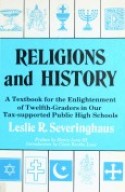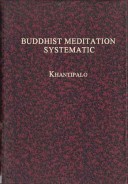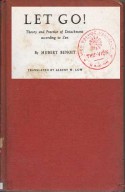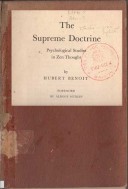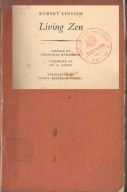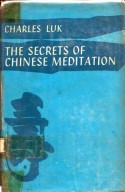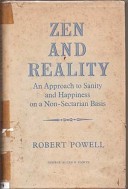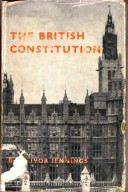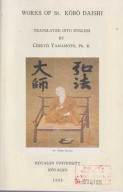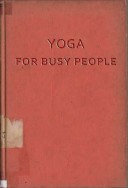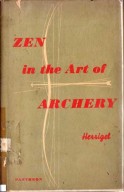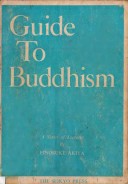Tìm Sách
Sách tiếng Anh-English >> Religions and History
Thông tin tra cứu
- Tên sách : Religions and History
- Tác giả : Severinghaus, Leslie R
- Dịch giả :
- Ngôn ngữ : Anh
- Số trang : 181
- Nhà xuất bản : Vantage Press - New York
- Năm xuất bản : 1986
- Phân loại : Sách tiếng Anh-English
- MCB : 1210000007583
- OPAC :
- Tóm tắt :
FOREWORD
This textbook carries a message to the young men and women enrolled in their last year of secondary education in our high schools. At my advanced age, I think of them as boys and girls; realistically, I know that they are on the threshold of responsible adulthood. Soon they will become candidates for the job market, for specialized vocational training, or for higher education on the campuses of our colleges and universities.
In our multireligious and multiracial society are to be found virtually all religious traditions now extant throughout the continents of the world. Predominantly Christian though we are, temples, shrines, mosques, and synagogues dot our fair landscape from coast to coast and from border to border as they do also in Alaska, Hawaii, and outlying protectorates. Freely their members practice and propagate their diverse faiths, quietly rejoicing in the assurance of freedom to worship as explicitly set forth in the Constitution of the United States of America:
Congress shall make no law respecting an establishment of religion, or prohibiting the free exercise thereof; or abridging the freedom of speech, or of the press; or the right of the people peaceably to assemble, and to petition the government for a redress of grievances.
Not elsewhere on this earth is there a nation of such geographical extent and population—230,000,000 people—where “government of the people, by the people, for the people” is a demonstrable reality. The Founding Fathers—well deserving of capitalization—were determined that in launching our democratic government, no single established church or religious order should dictate the acts of the people’s government.
Consider the inscription that ennobles the Statue of Liberty at the entrance to New York’s harbor. One hundred and twenty years after the Declaration of Independence, it bore testimony under the presidency of William McKinley that the lamp of Judeo-Christian brotherhood still burned brightly.
Give me your tired, your poor, your huddled masses yearning to be free; the wretched masses from your teeming shore. Send these, the homeless, tempest-tossed to me. I lift my lamp beside the golden door.
Was that dedicatory invitation nothing more than the emotional enthusiasm of a fledgling nation designed to impress the older nations of the world? Never so! The same gratitude that moved the Pilgrim Fathers to thanksgiving for their deliverance from oppression still welled up in the hearts of God-committed Americans. Although by 1896 the population of our country had grown from 5,308,483 in 1800 to 75,994,575 in 1900, the obligation of brotherhood, instilled by Christian faith, guided the lives and thoughts of Americans. They were “their brothers’ keepers.”
Today’s population figure of roughly 230,000,000 thus includes the birthright American children of nearly 50,000,000 immigrants who came to our shores during our 210 years of nationhood. Surely those figures are indeed unique in world history. Despite this enlargement in population count, however, the fact is verifiable that about 93 percent of all children in our public schools come from families of Christian background. The others are Jews, Moslems, Buddhists, Hindus, Confucianists, Shintoists, et cetera. It is their families who have built the temples, shrines, mosques, and synagogues where these thousands may worship in security from governmental interference.
It seems entirely reasonable, therefore, to include in our high school courses in American history—along with “taxation without representation” and other political complaints—the story of a religious heritage without which the Statue of Liberty might never have taken its stand at the “golden door” of New York’s harbor. In no sense can this be interpreted as an attempt by Christianity to proselytize among other faiths, or to be a violation of the injunction to keep “church” separate from “state.” That separation was accomplished once and for all time by the Founding Fathers’ insertion of the First Amendment to our Constitution—that no established order of a particular creed should ever interfere with the governmental actions of the new democracy.
To speak more in the contemporary idiom, although religious beliefs in America can be construed as a segment of the competitive, free enterprise system, religion remains a very personal experience. As man does, so is he seen to be. All religious people in America are free not only to worship but also “to let their light so shine” that others may pass judgment on the values by which they live. Out of this experience comes the personal commitment that each individual ultimately makes. This has nothing to do with “separation of church from state.”
It is to be expected that all elected representatives in government, from township to the presidency, will contribute to this functioning democracy personal judgments that reflect the moral precepts by which they live. Even the secular humanists have the remarkable privilege of worshiping man as the highest point in evolutionary development rather than extolling a Supreme Being. What is unthinkable, however, is that we, a demonstrably Christian nation in founding and pursuant acts, should fail to give religion its rightful place in the teaching of American history. All other religious faiths, here resident, have both the privilege and the obligation to present their beliefs to their children. Only in the “free world” does this opportunity exist.
Words of caution are in order: those qualified to teach such a course in American history will be difficult to find. They must possess not only an extraordinary commitment to teaching as a profession but also a disciplined objectivity that will deny access to personal beliefs and prejudices. Let us not underestimate the learning capacities and desires of our high school seniors. History, languages, and literature come alive when taught in conjunction with a course in comparative religions.
Somehow we must do a better job of educating in our public schools lest we mindlessly steal from our young people knowledge of the great constants of life wherever they may be found. Only through our own neglect need the “American Dream” become but another example of an extinct species.
PREFACE
So much of what we read in popular histories and school history texts concerns itself with kings and conquerors, palaces and parliaments, trade and treaties, wars and disasters, that the enormous impact of religions on events often seems underplayed. One reason may be that we study more history that is near in time and place rather than that of the long-ago and faraway. Thus we may be more familiar with the victory of General Thomas at Chickamauga than with the evangelizing of St. Thomas on the Malabar coast.
Another reason may be that the founders of most of the great religions are seen as moralists rather than as men of action who changed political maps in their lifetimes. This, of course, is to lose sight of the fact that their influence spread widely and persisted over millennia so that it has affected political maps to this day. Still another reason is that writers and teachers of general history see their franchise as emphasizing the political and social, while relegating religion to a separate compartment.
It is obvious, however, that the interaction of religion with all human forces has been pervasive, a fact which meaningful and accurate history cannot ignore.
A study of history requires that we recognize great differences between the major thrusts of the great religions: Christianity as evangelical, Islam as warlike, Buddhism as passive, Judaism as nationalistic, but at the same time acknowledge that they represent a common human imperative, which is that some supernatural force guides our existence and future. In no case have the followers of these religions always been true to their ideals, but over time religious commitment has exercised a powerful restraint on the evils of human nature.
And so a study of history also requires that we contemplate the possibility of a Divine Being who was Creator of life and remains our Great Guide in history.
In addition, religions have often been the carriers of civilization and its cultural attributes from one area to another. Thus Buddhist monks brought a written language to an illiterate medieval Japan, enabling the Japanese for the first time to start recording their own history. And thus did Middle Eastern Moslems bring Islamic architecture and Arabic computation to India. In more recent eras, Christian missionaries have spread the knowledge of Western higher learning and modern technology throughout the world.
In this book, Leslie Severinghaus makes this case by surveying the rise of religions over the 7,500 years of recorded history. He marshalls a fascinating array of often unfamiliar statistics to show, religion by religion, and country by country, where the world stands today and how it got there. Dr. Severinghaus brings to this work the experience of some sixty years of teaching, starting in China where the confrontation of different religious traditions was enlightening and challenging. I hope Religions and History will be a stimulator for further research as it is intended to be.
Henry Luce III
Oyster Bay, NY, June 1985
CONTENTS
Foreword
Preface
Introduction
- Have We Dropped Something When No One Was Paying Attention?
- Each to His Own
- Who? What? Where? Why?
- A Letter and a Little Geography
- We Continue the Quest
- From Fantasy Back to Reality
- A Further Look at Europe
- The Dark Continent of Africa
- The Brighter Side
- A Different Theater with Changes in the Cast
- Small but Important
- A Pause to Remember
- We Move to the Far East
- Confucianism
- Taoism
- Shintoism
- Echoes from Earlier Chapters
- Communism
- The Missionary Movement
- Epilogue
 Facebook
Facebook
 Google
Google
 Google+
Google+
